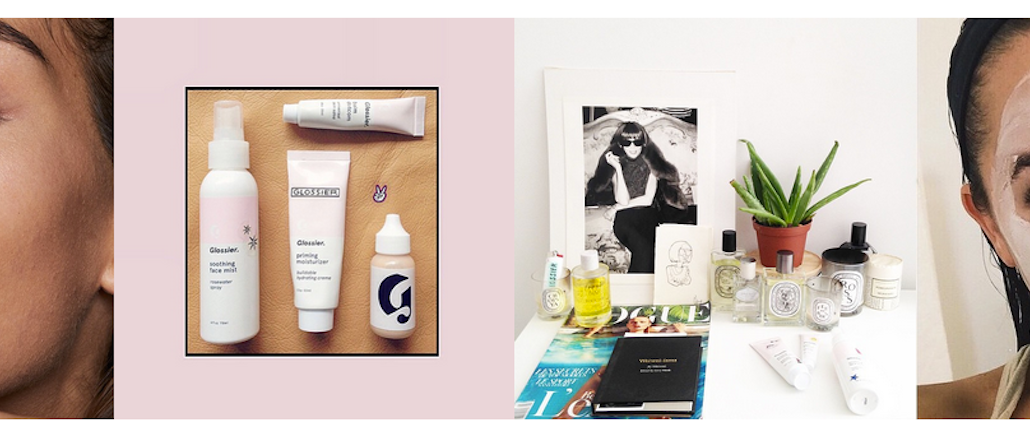Into the Gloss used Instagram and blog comments for new product ideas

For beauty brand Glossier, Instagram and blog comments aren’t cringeworthy fodder to be ignored. Instead, they served a surprisingly real purpose within the company when the team collected them to create its first face wash, the Milky Jelly Cleanser, launched on Monday.
Founded by beauty expert Emily Weiss, Glossier is part of the same company as Into the Gloss, Weiss’s blog that inspired the line of products. After introducing products like a foundation, a balm and a moisturizer since launching in 2014, Weiss and her team of 38 employees set out to create the perfect cleanser. In January of 2015, Weiss wrote a post on Into the Gloss to ask readers: What’s your dream face wash?
A year, hundreds of comments on Instagram, and over 400 blog comments later, the new cleanser was ready to debut as Glossier’s most crowd-sourced product yet.
“Development started on Into the Gloss,” said Ali Weiss, Glossier’s director of marketing. “Comments on the open thread helped decide what the product would be, and we were able to bring the customers on the journey with us.” Feedback from commenters included key phrases like “removes makeup” and “balm-like texture,” which the team reported back to the lab.
Glossier has a cult-like following that was born on Instagram. It began building the brand on the platform, bringing in about 20,000 followers a month before Glossier.com launched. By relying on word-of-mouth for a majority of its marketing (Glossier has done hardly any paid advertising), the company has created a passionate community out of its niche consumer base, which it trusts enough to influence its newest products. The company now has 132,000 followers on Instagram, and said that, while it doesn’t break out subscription numbers, email is its second-strongest channel after Instagram.
Ad position: web_incontent_pos1
“Instagram will always be our core community, as that’s our full audience,” said Weiss. “Email is where we can talk to those customers in a longer form.”
When the cleanser went on sale for $18, Glossier sent out announcement emails, as well as a $10-off launch discount, and linked to Into the Gloss articles that clearly laid out how the cleanser came to be and videos that showed how to use it. Weiss claims that since Glossier has a strong editorial team thanks to Into the Gloss’s three editors, it’s able to communicate via email more like a publisher than a brand. (Recent articles included in the email newsletters include an introduction to Glossier’s Snapchat account and a beauty-focused interview with singer Jhené Aiko.)
Ad position: web_incontent_pos2
On Instagram, the brand teased out the release of the cleanser using photos of empty product bottles and quotes about the face wash. All of the related Instagrams send followers to shop Glossier.com. Weiss said that while it doesn’t share financial figures, the company has been seeing revenue go up each quarter since it raised its most recent funding, an $8.4 million round in November of 2014.
Other beauty companies have focused on growing by connecting with customers through content and social media. Birchbox combined the two teams into one, under the title of “brand voice,” while decades-old brand Benefit transitioned into a digital world by building buzz with its cheeky-toned social media and email voice. Brands born in the digital age, however, have the advantage of a clean slate.
“For Internet-born companies with passionate audiences, you’re able to get to your consumer right away,” said Ashley Paintsil, editorial director at FashInvest, a platform focused on emerging growth companies in retail and fashion. “You’re giving the niche customer base what they want, and the companies that do really well have that unique customer.”
More in Marketing

In the marketing world, anime is following in the footsteps of gaming
As marketers look to take advantage of anime’s entry into the zeitgeist, they might be wise to observe the parallels between the evolution of anime as a marketing channel and the ways brands have learned to better leverage gaming in recent years.

With the introduction of video ads and e-commerce, Roblox looks to attain platform status
Roblox is expanding into more areas than just ads in 2024. Much like platforms such as Amazon and Facebook have transcended their origins to evolve from their origins as online marketplaces and social media channels, Roblox is in the midst of a transformation into a platform for all elements of users’ virtual lives.

PepsiCo wants to remain a ‘driver of culture’ as it turns to influencers and activations amid rebrand
The soda-maker says it can translate cultural relevance into sales volume.
Ad position: web_bfu